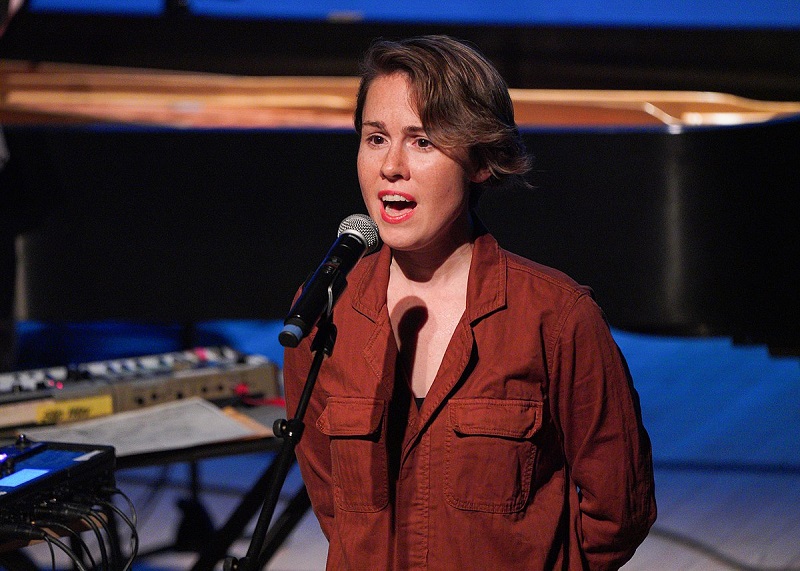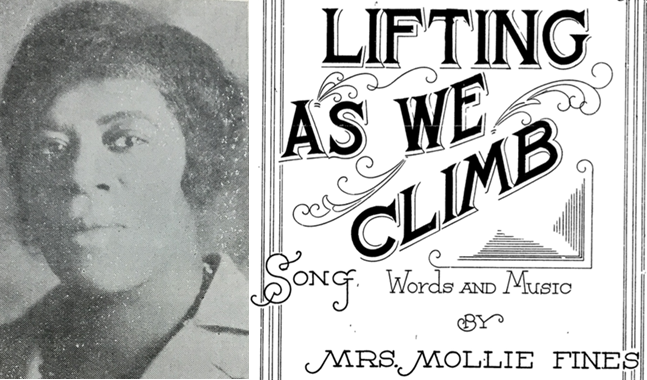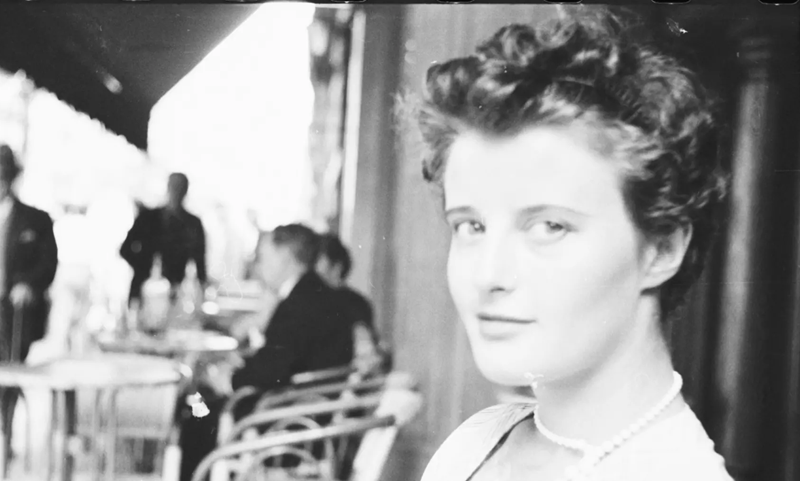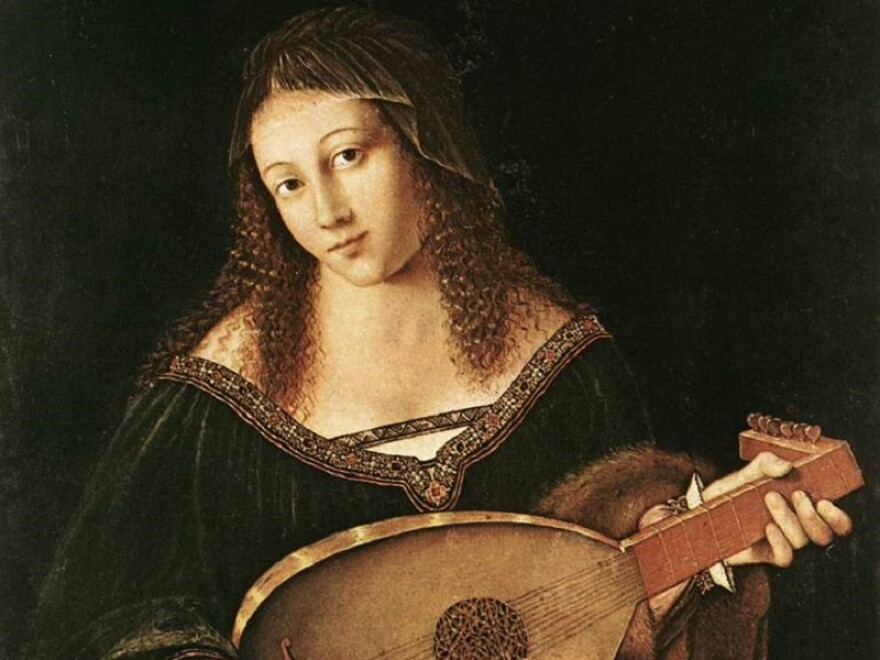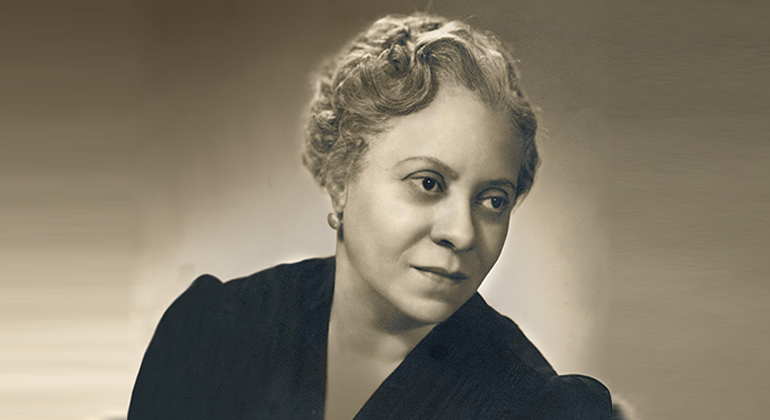In March of this year, I began teaching a course on the analysis of contemporary music. I confess that in some ways a course like this was out of my wheelhouse. I’m a scholar of art song, and my writing and teaching have largely focused on nineteenth-century music. But during the pandemic, seeking new experiences that I could enjoy while largely homebound, I decided to expand my listening horizons: if I couldn’t go hear live music with other people, I could at least encounter new music via Apple Music, Spotify, and YouTube. Plus, I could connect with dear friends from afar, whom I reached out to for listening recommendations. Who are the most exciting young composers active today?, I asked them. What new music should be on my playlists? What do I have to be listening to right now?
Those pandemic playlists formed the basis for my class – with works by Nathalie Joachim, Kate Soper, Missy Mazzoli, Bryce Dessner, Anna Thorvaldsdottir, Lainie Fefferman, Cara Haxo, Benedict Sheehan, Caroline Shaw, Sarah Kirkland Snider, Angélica Negrón, and many others. My only stipulation was that the music had to captivate me in some way. I leaned toward underrepresented composers, but no single style or compositional aesthetic unified the rep list. Nor did a single genre label.
This lack of unity made it difficult to decide on the appropriate analytical tools – pitch-class set theory would work for some pieces but not others; likewise with the various analytical apparatuses that music theorists have devised to deal with rhythm and meter, harmony, and form. So I was forced to adopt more “ecumenical” approaches, ways of analyzing that could be applied as much to the spiky, quirky modernism of Kate Soper’s works for voice and chamber ensemble as to the lush tonality of Benedict Sheehan’s choral music.
Musical Mapping
One such approach involved defining musical form very broadly. I encouraged my students to think of “form” not as an external archetype (ternary form, theme-and-variations form, sonata form, arch form, palindromic form, strophic form, etc.), but rather as an expressive shape, which might be unique to a given work. I spent time in class having them listen to pieces with little to no priming, and afterwards asked them simple questions: What did you notice? What surprised you? What adjectives and images came to mind as you listened? And then I had them create pictures that captured what they experienced. I drew inspiration from a book by the music theorist Judy Lochhead, Rethinking Structure in Contemporary Music. Lochhead devotes a section of the book to what she calls “musical mapping”:
In the same way that some geographical region might have multiple mappings depending on the interests of the mapmaker, a musical work generates diverse mappings. The processes of mapping serve an exploratory role for the analyst, allowing her to hear the work from multiple perspectives (95).
The results were stunning. The students’ “musical maps” were far more creative than anything I could have imagined – and not just creative but also vivid: their maps captured the musical trajectories of these pieces better than a more standard formal diagram could (with letter names, musical motives, tonal regions, and the like). When I looked at them, I sensed, in an instant, what a piece felt like. Plus, I could often trace a beautiful shape or pattern as I listened. In this sense, they really were maps – but they traced emotional rather than physical routes.
Shaw’s Gradual Dazzle
Below are four maps of Caroline Shaw’s song “A Gradual Dazzle,” chosen from over a dozen equally captivating maps my students created. Picking only four was hard, so if you want to see the rest, you can access them via this link. Shaw’s song, from her 2021 album with Sō Percussion, Let the Soil Play Its Simple Part, worked especially well for a visual-analysis exercise because it’s based on a poem about a painting by Edward Hopper; you can learn more about the song from an episode of my podcast Resounding Verse.
Each map is accompanied by a brief description, written by the mapmaker. Think of these descriptions as the small labels you’d see beside artworks in a museum. Read them to get a sense for how to interpret the maps, and then listen to Shaw’s song with each map in front of you. If your experience is anything like mine, you’ll discover something new each time.
Mapmaker: James Daley
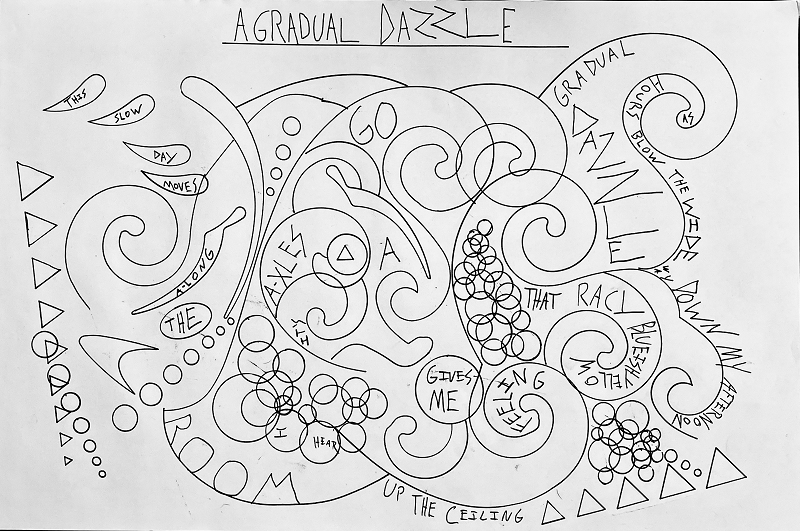
My concept started with the curvy wave-like forms that I associated with the melody. In my mind I was picturing organic shapes that you might find in nature, free flowing but also random. I decided to incorporate the text as a visual narrative; if you read it in order, it guides your eyes through the drawing – and the path reflects the shape of the song.
***
Mapmaker: Rongrong Chen
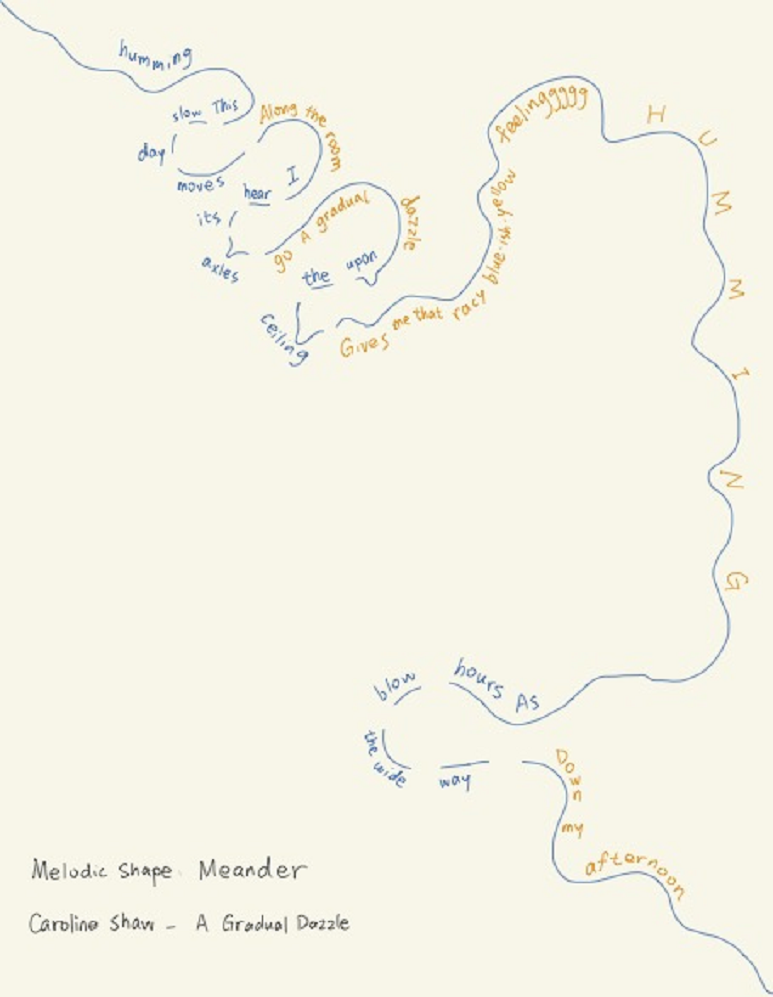
My river-shaped map is inspired by the melismatic nature of the song’s vocal melody. The changing direction of the “river” reflects the changing character of the melody: when the river goes to the right, the melody is continuous; when it goes to the left, the melody is discontinuous, represented by blanks and short lines.
***
Mapmaker: Josef Ward
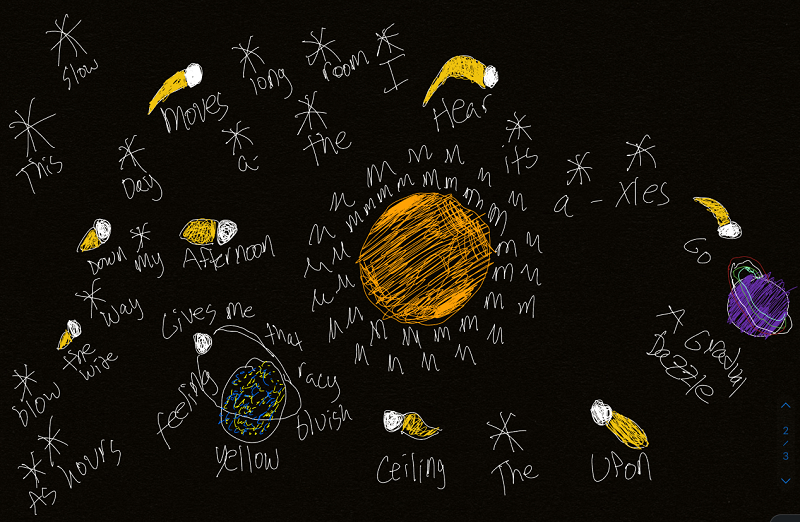
My galactic map was inspired by the sense of space that exists throughout the piece, especially with the vocals, which immediately made me think of astronomical space. The short words are represented by stars, longer words by shooting stars, and long circular phrases by planets or moons, with a sun at the center. All swirl together to form a map that can be read in a spiral, just like the shape of a galaxy.
***
Mapmaker: Tera Murdock
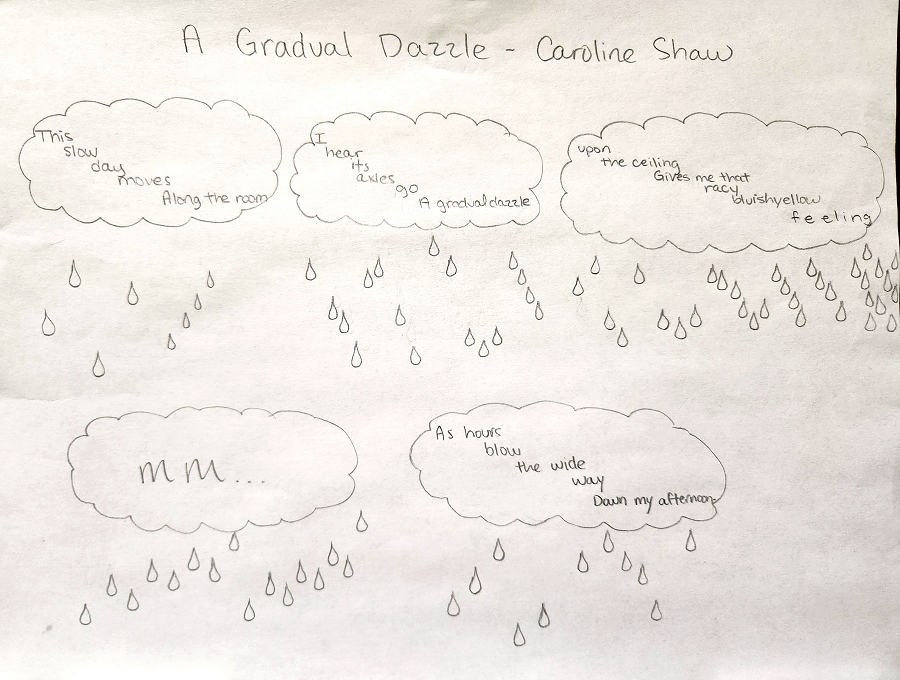
As I listened to Caroline Shaw’s “A Gradual Dazzle,” I envisioned a rainy day. In my map, I used that imagery to chart the vocal melody with the rain clouds and rain drops. I grouped the words of the poem into different clouds based on the melodic phrases. Each individual raindrop represents the notes of the melody, except for the melismas on the word “feeling” and the humming “mm.”
***
Notes
The banner photo is of Caroline Shaw, taken by Steven Pisano during a performance at Miller Theater, Columbia University.
Judy Lochhead, Reconceiving Structure in Contemporary Music: New Tools in Music Theory and Analysis (Routledge, 2016).


